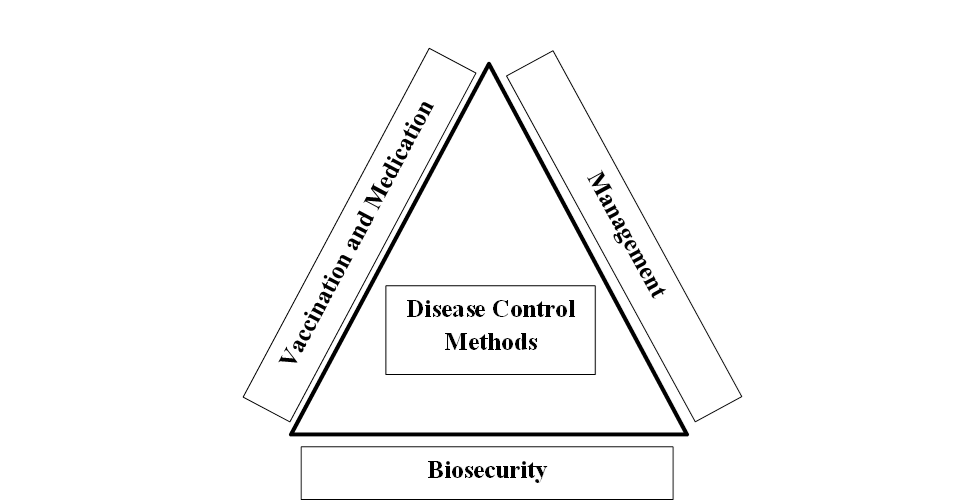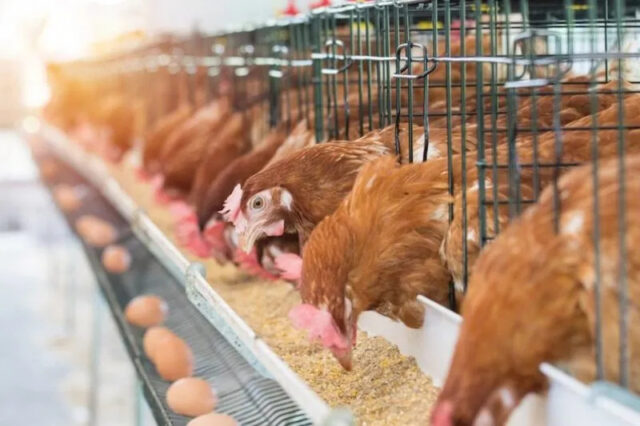Impact of Diseases in Poultry Industry
In poultry industry, at least 8 to 12% of the total production cost is accounted by the disease and the total cost of specific diseases outbreak is very shocking. As we can learn from past that,
1. Avian Influenza outbreak in May 2000, in Italy costed approximately 210 million Euros and led to the death of more than 15 million birds.
2. Newcastle Disease outbreak in USA severely affected the economy and raised the prices of eggs and poultry.
3. Avian botulism killed over 20,000 birds in and around Rajasthan’s Sambhar Lake, India.
Economic Challenges in Poultry Industry
The most challenging task in livestock and poultry industry is to recognize weather the disease is clinical or apparent. The major economic impact of disease is associated with subclinical and apparent form which most often remains hidden. To overcome the direct and indirect impact of disease is the major challenge for the poultry industry, nowadays. Basically, poultry farmers have two choices, first to produce more birds at the same price, second to produce the same amount of birds at minimum price. The second option seems to be more beneficial financially because generating more at the same price overloads the market which causes downfall of margins and prices, on the other hand, generating the same number of birds at minimized cost maintain the prices with more profit.
Biosecurity and its Value
High efficiency is considered as a key element to produce the same number of birds at reduced prices and the most important limiting factor to high efficiency and better performance is disease. Hence, to raise the efficiency one should have to limit the disease. Biosecurity is considered as the most efficient method to protect against disease, especially for modern poultry farms (except diseases originated from the farm ecosystem). Biosecurity is a key to successful and profitable poultry farming. Birds in farm are under constant challenge from disease. Diseases may owe their origin from various sources like viruses, bacteria or fungi, and also it may spread through mechanical vectors which act as carriers. These include the birds themselves, workers and bird handlers, fomites, contaminated food and water, the housing and equipment and also the air inside. The critical key to successful disease control is to break this cycle of infection and transmission.
Disease Control Elements
Vaccination and medication can only treat and prevent diseases but, in isolation, cannot prevent losses due to diseases. Modern farming methods demand an all-encompassing holistic approach. Until and unless the background challenge from disease organism is regulated and good management practices effectively followed, vaccination and medication alone cannot adequately protect the stock. Birds must be given an ecosystem in which diseases and infections are controlled in such a way that vaccination and medication can achieve maximum positive effects. Hence, in the triangle of disease control methods (Fig.1) biosecurity is considered as a major aspect. In protecting the health of the birds, each side of the triangle is important but also interdependent with the other two sides.

What is Biosecurity Assurance System (BAS)?
On the basis of Hazard Analysis and Critical Control Points (HACCP), governments are adopting an approach to food safety. Antec International’s Biosecurity Assurance System (BAS) is not only entirely consistent with these principles but was developed significantly in advance of formal legislation. The trials conducted concluded a large beneficial effect of BAS on business in their results. Even taking into account the extra costs spent on Biosecurity Assurance System, the significant reduction in veterinary costs (an almost 50% reduction in overall veterinary bills was seen) together with large increases in egg production and feed efficiency as a result of Biosecurity Assurance System resulted in an excellent cost/benefit ratio of 1:49. So, correct biosecurity is an input/output, cost-effective approach.
Economic Benefits of Biosecurity
As we know “the prevention is better than cure”, biosecurity is a vital ingredient to control diseases in a best possible manner. Biosecurity system minimizes disease costs and outputs more profits and hence considered important and need of time for the poultry industry to grow and serve. The investment in establishing a biosecurity system is small as compared to economic and financial profit.
Also, read | Poultry Breeding: Recent Molecular Approaches, Breeding Programmes, and Selection Methods
Conclusion
The diseases show a major impact on production cost in poultry industry and it’s not new, as we had seen that there had been outbreaks in the history of the world which had broken even the economy of a country. Diseases directly and indirectly affect the economy of poultry industry. Biosecurity is considered as a key element and most efficient method to protect against diseases. Biosecurity occupies a central and main role in disease control triangle. Biosecurity Assurance System (BAS) by Antec International is based on Hazard Analysis and Critical Control Points (HACCP). There are economic and financial benefits associated with use of biosecurity. Hence, biosecurity can be considered as an economic security.
Author:

Vishal Yadav1*
1M.V.Sc. Scholar, Department of Veterinary Gynaecology and Obstetrics
College of Veterinary and Animal Science, Bikaner
Rajasthan University of Veterinary and Animal Sciences, Bikaner (RAJUVAS – Bikaner), Rajasthan – 334001, India
*Corresponding author: Vishal Yadav (M.V.Sc. Scholar), email: vishalyadav1131997@gmail.com















